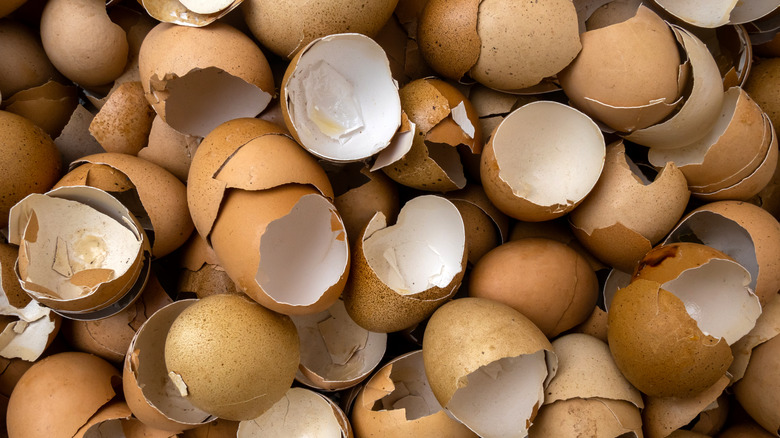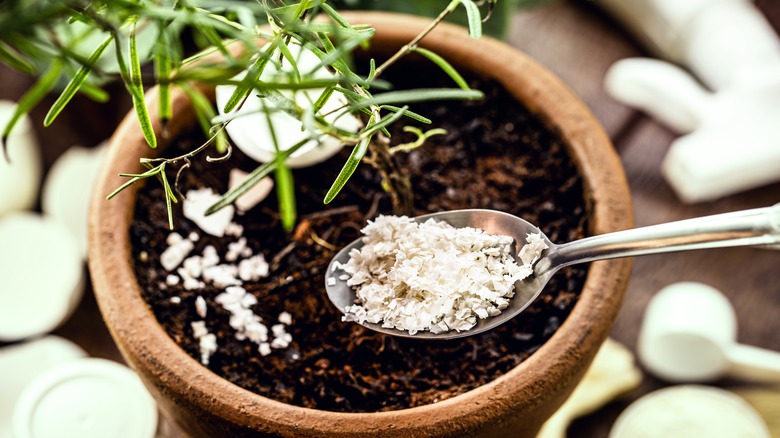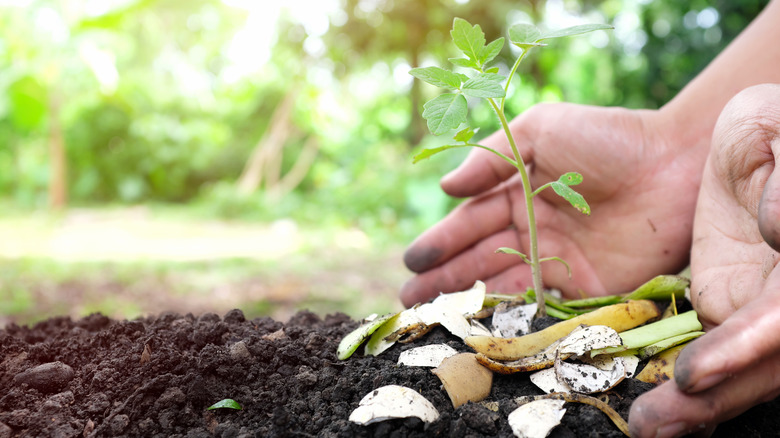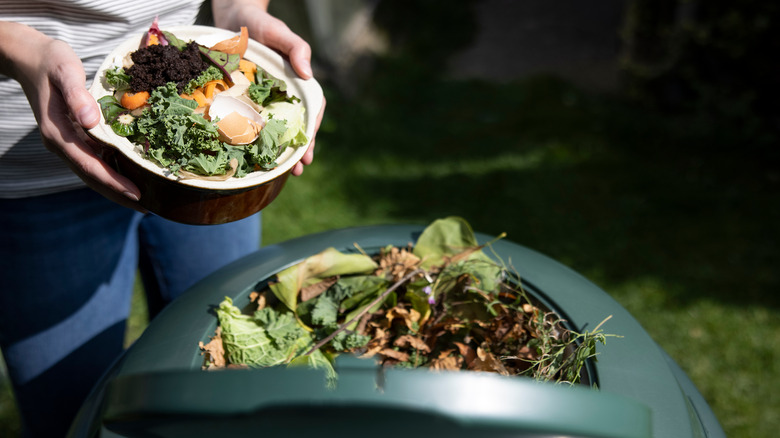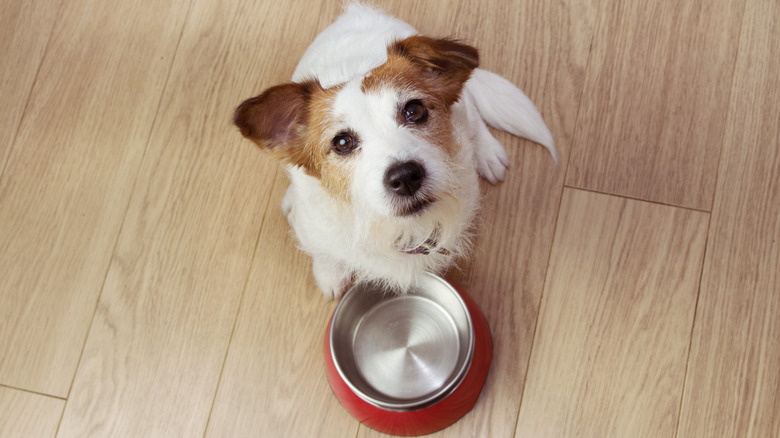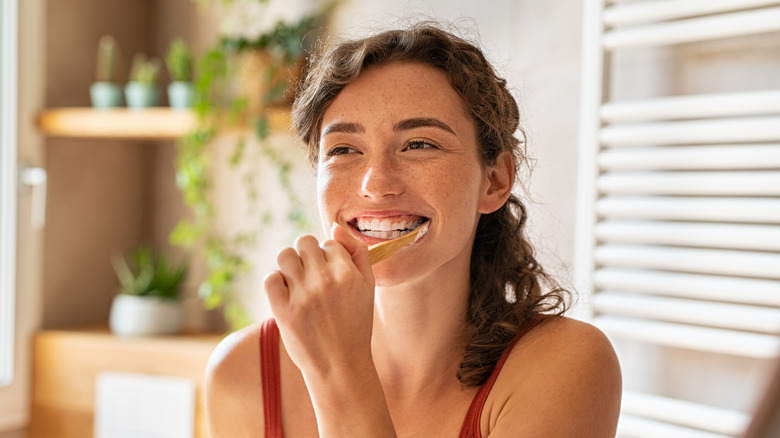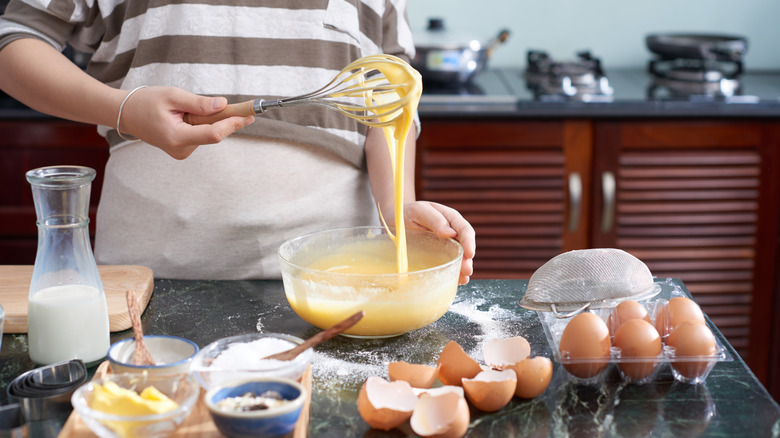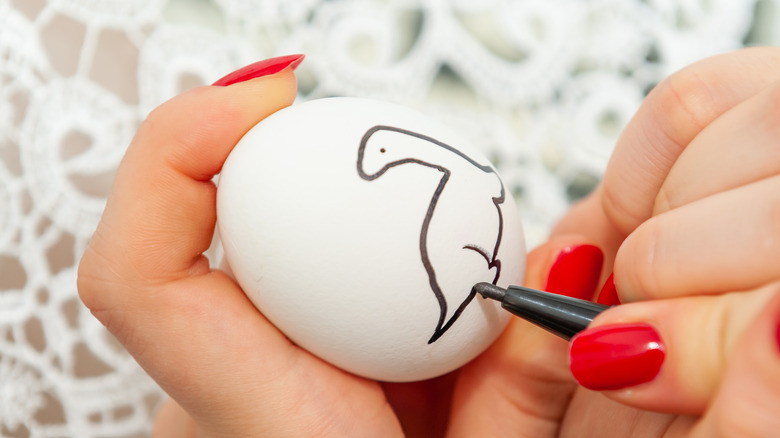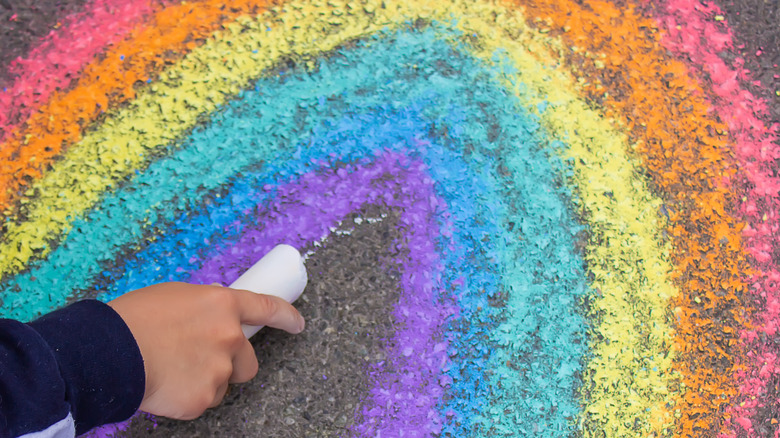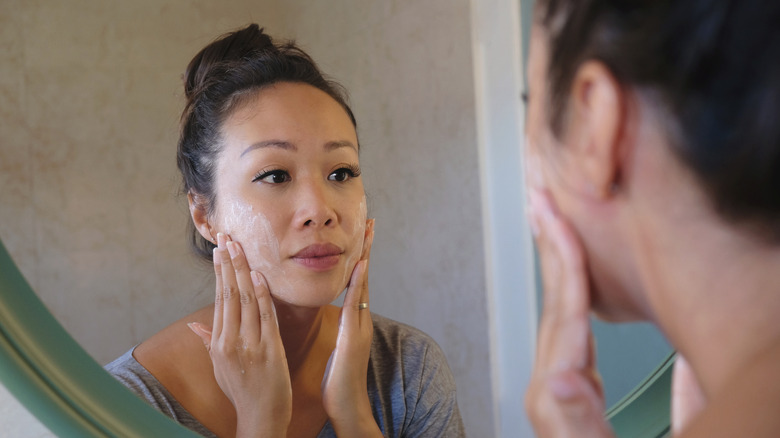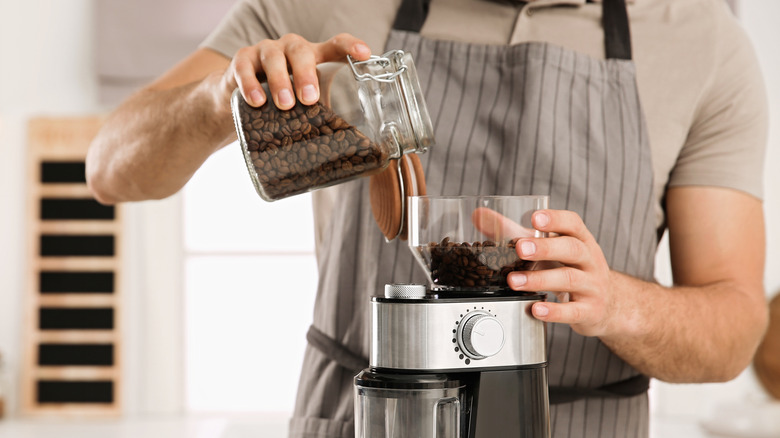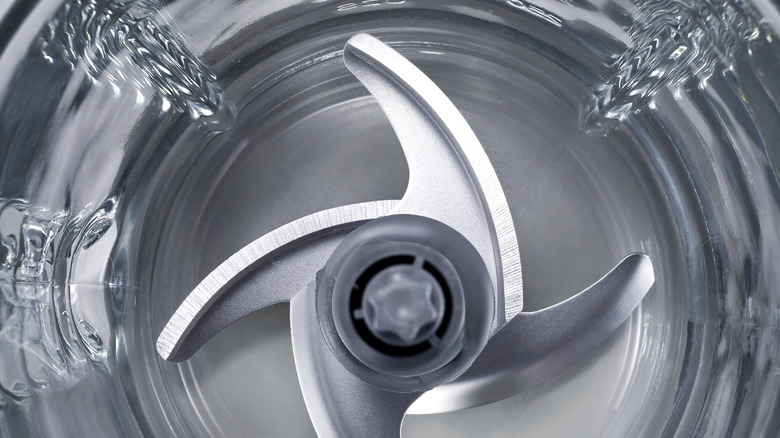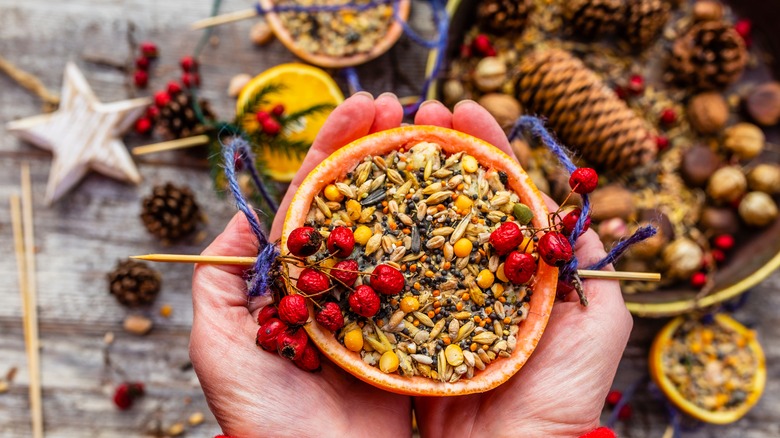12 Ways To Use Eggshells So You Never Have To Throw Them Out
In America alone, chickens lay more than 110 billion eggs each year. And with those eggs, we inevitably get eggshells — thousands and thousands of pounds of brittle, cracked, pointy shards, most of which go directly into the trash. But they don't have to!
Made almost exclusively from calcium carbonate — the same mineral found in marble and limestone — eggshells are biodegradable and will break down and decompose over time. But why let them just rot in a landfill — especially when they can be used in so many other ways? From producing sturdier houseplants to taking the bitterness out of a widely beloved drink, to entertaining kids and helping raise healthier pets, eggshells actually have a multitude of uses — many you may not even be aware of.
Keep reading for our breakdown of a dozen ways to use these nutrient-dense shells in and around your house, so you never have to throw them out again. Mama Earth says thanks in advance!
Fertilize your houseplants
One of the easiest ways to use eggshells is to turn them into a homemade fertilizer for your houseplants. With their ample calcium content, shells are an ideal way to promote lush growth, encourage healthy roots, and bolster overall plant health. Eggshells also help to improve the quality of your plant's soil, making it less acidic and more alkaline (which everything from your aloe vera to your asparagus fern will appreciate).
To turn your spent eggshells into a plant friendly fertilizer, first rinse them with water to remove any remaining egg whites or yolks and then let them dry thoroughly. Next, crush the egg shells into the smallest pieces possible. You can use a rolling pin, a mortar and pestle, or even an old blender or coffee grinder will do the trick. The smaller the pieces, the faster they will break down and add nutrients to your soil.
Finally, sprinkle around 1 tablespoon of the crushed eggshells directly into the soil of your potted plant. You can add the shells whenever you are repotting. Or, simply dig a small hole for them or spread them directly on top of the plant's soil (if you don't mind the white of the shell being visible). Then, water your plant as normal.
Keep pests out of your garden
Just as eggshells can be a houseplant's best friend, those white (and brown) chunks of brittle calcium are just as good for your garden. They'll help to fertilize your plants and bathe them in a hearty dose of calcium, of course. But they have added benefits as well.
For starters, eggshells are great for keeping pests away. The internet is full of conflicting advice on deer and their love or hate for eggshells in particular. Some people say the smell of the eggshells helps to keep them away; others say it's not effective. But one thing many gardeners do seem to agree on is that when it comes to smaller pests like slugs and snails, cutworms, caterpillars, and a number of other crawling insects, egg shells can be a highly effective deterrent.
Chalk this benefit up to the jagged, sharp eggs you find on broken eggshells. It turns out that many bugs don't like crawling over them — especially bugs with relatively soft bodies. So if you're trying to protect a young tomato or some fragile herbs that are just starting to take off, spreading 1 or 2 inches of tiny crushed eggshell pieces around the base of your plant might be just the ticket.
And if the bugs still crawl over the eggshells, at least those shells serve as a bit of mulch for your plant, helping to retain extra moisture, boosting its nutrients, and slightly improving drainage. It's a win-win either way!
Fuel better compost
Composting is nature's form of recycling — it's the organic process of turning leftover food scraps, leaves, and plant waste into a valuable fertilizer that's great for the soil and creating a healthy and vibrant yard and garden. It's also an ever growing trend that Americans are embracing. And it's an excellent way to use up leftover eggshells instead of trashing them.
To start your own compost bin, first select an outside location where it can be placed that receives partial sunlight and has good drainage. Next, place your wooden or mesh bin in that spot and then fill it with a layer of coarse materials like twigs or straw — this is essential for proper aeration. Finally, take turns alternating equal layers of "green" materials (like kitchen scraps, coffee grounds, and those eggshells) with "brown" materials (like dried leaves, newspaper, or cardboard) in roughly equal amounts. Be sure to chop large items into small pieces to allow for faster decomposition.
Your compost bin should be kept slightly damp, like a wrung-out sponge. From time to time, turn or flip the bin's contents to promote aeration and further encourage decomposition. Keep the bin covered with a lid or tarp to thwart pests and bugs. Gradually, over weeks and months, all the waste within the bin — shells included — will start to break down into nutrient-rich compost, perfect for your garden!
Alternatively, if your city collects compost — and you don't have a garden — simply put the egg shells in your bin with your other food scraps to be hauled away and composted by the city.
Make a supplement for pets
Humans aren't the only ones who appreciate a good supplement. A wide variety of pets also benefit from the addition of small amounts of eggshells to their diets.
Regardless of the type of pet you have, the process for making their calcium-infused supplements always starts the same way: sterilizing the eggshells. To make sure your shells are salmonella free, spread washed shell pieces evenly on a cookie sheet and bake at 200 degrees Fahrenheit for 15 to 20 minutes. Next, using any of the methods we outlined earlier, crush the shells into the finest powder possible. A coffee grinder will typically yield the best results. (You could also boil the shells for five minutes and then allow to try thoroughly in the sun before use.)
Dogs' calcium needs vary greatly based on their size, breed, and age, so use an online calculator to determine proper dosing and then add that amount of powdered eggshell to their everyday food. Don't be surprised if the amount is small — even large dogs rarely need more than 1 teaspoon.
In addition to providing a bone strengthening, joint supporting shot of calcium to the dog in your life, eggshells can also be a useful supplement for reptiles like geckos, chameleons, turtles, and even some types of aquarium fish. (Just be sure to consult a vet, pet store, or online specialty pet group when determining the amount of shell you use to protect your animal's health.)
Whiten your teeth
If the idea of feeding your dog or iguana eggshells gave you pause, consider this: You can also turn eggshells into a wonderful and highly effective homemade toothpaste and teeth whitener. Before you shake your head in disbelief, note that in a recent study published in the European Journal of Dentistry, researchers confirmed that eggshell-based toothpastes can whiten teeth.
To make your own paste, first wash, dry, and sterilize your eggshells as we've already outlined. Next, use your mortar and pestle or coffee grinder to crush them into a fine powder. Now comes the fun part: Mix an equal amount of baking soda and eggshell powder. (The shells are there for abrasion while the baking powder cleans and neutralizes odors.) Finally, add a small amount of coconut oil and stir everything together until it reaches a paste consistency. If you'd like, you can also stir in a few drops of peppermint or spearmint essential oil for flavor.
Transfer your homemade toothpaste into a small, airtight jar or container. Then, whenever you want to brush your teeth, use your toothbrush to scoop out a small amount of the toothpaste and brush your teeth as normal. For best results, use this homemade toothpaste in addition to your regular toothpaste — you need both since your eggshell concoction doesn't prevent cavities or promote gum health.
Clean stubborn stains
Whether you're whipping up a decadent Black Pepper Soufflé, a Rosemary and Olive Frittata, pancakes, or just a plate of eggs over-easy, it's easy to make a way bigger mess in your kitchen than you might have intended. Fortunately, the leftover eggshells you have lying on the counter or tossed in your sink are a great way to clean up that mess. You can't use the shells from the meal you just prepared (they're still too wet and sticky), so keep a bowl of shells under your sink or in your pantry and pull them out whenever you need a little extra power scrubbing in the kitchen.
To clean with eggshells, first crush them by hand or with a rolling pin into fine pieces. Next, wet the surface you want to clean. You can use either plain water or water plus a few drops of dish soap or a squirt of your favorite cleanser. Finally, to get rid of that dirt and debris, dip a small brush or scrubbing pad into the crushed eggshells. They'll provide added grit and abrasive power, perfect for scrubbing whatever surface you want to clean. You can even blend the shell powder with baking soda for more cleaning potential. Although eggshells are safe for most surfaces, use with care when you are cleaning something that is delicate or can scratch easily.
Create art
Egg art isn't just for Easter. Whether you want a fun weekend activity for your kids, or are looking for something peaceful and relaxing you can try yourself some rainy afternoon, eggshells can make a wonderful canvas for a variety of art techniques. And if you remove the egg from the shell first, you'll have art that can last for years — if you're careful, of course!
The first step in making any sort of egg art is "blowing" the egg from the shell. To do this, you'll need to create a small hole at each end of the egg and gently blow the contents out of the shell. First, using a room temperature egg, carefully tap a hole into the wider end of the egg using an egg piercer — a pin or needle will also do the trick.
Next, repeat the technique on the more narrow end of the egg. Finally, grab a bowl or measuring cup and hold the egg over it. Just as you would blow up a balloon, place your lips over the hole at the top of the egg and gently blow. The pressure will push the egg white and yolk through the other hole and into the bowl, leaving you with a completely empty eggshell — perfect for painting, decoupage, dyeing, or even simply drawing on with a Sharpie. Just be sure to rinse the empty eggshell with water and let it dry completely before creating your masterpiece.
Make sidewalk chalk
If your kids don't have the patience (or delicate skills) needed to create eggshell art, then help them to do the next best thing: Create sidewalk art literally made with eggshell chalk!
By now, you know the process. You'll need clean, dry, sterile, eggshells to start. Crush them into a fine powder using your technique of choice — the finer the powder, the smoother your chalk will be. Of course, you will need eggshells to make the chalk, along with tempera paint (for color), and Plaster of Paris (which is essentially a powder that thickens and hardens when exposed to moisture — look for it in most hardware stores).
Once you have your supplies on hand, combine the crushed eggshells with the Plaster of Paris in a 1:1 ratio (for example, 1 cup of each). Then, slowly add just enough water to create a thick, but pourable, paste. Stir as you add the water and don't add too much — the paste can't be runny. If you are adding paint, do it now and mix until evenly blended. Then, pour the chalk mixture into a silicone mold or even a toilet paper roll lined with plastic wrap. Finally, allow the mixture to dry and harden. Note that this could take two to three days depending on the size of the chalk sticks.
When your chalk has solidified, it's ready to use on the sidewalk or anywhere else you would use regular store-bought chalk. Let your Picassos run wild — the chalk isn't permanent.
Exfoliate your skin
You don't have to spend a ton of money for glowing, healthy skin that looks like you just stepped out of the spa. Fresh, seasonal strawberries are one great option, ideal for fighting inflammation and keeping breakouts at bay — thanks to all that sodium ascorbyl phosphate, a type of vitamin C known to brighten skin (via Healthline). Also, cucumbers are perfect for rehydrating and rejuvenating tired, stressed skin.
And then there are eggs — well, eggshells to be more precise — that you can add to the list. Instead of downing eggshell powder and getting benefits from a mega-shot of calcium, however, the skin-beautifying properties from eggshells come from their ability to exfoliate. There are premade eggshell skincare products on the market designed to do just that. But why buy them when you can make them yourself? The process couldn't be easier: Combine dry, sterile, finely ground eggshells with a binder of your choice — water, honey, yogurt, and aloe vera are all good options. You could also add other natural exfoliators like oatmeal or sugar. Mix everything together to make a thick paste.
Your eggshell exfoliant is now ready to use. Apply it to damp skin, gently massaging in a circular motion to clean your face, knees, elbows, or other areas needing to be exfoliated. You want to remove built-up dead skin cells without damaging the skin underneath. When you're done, rinse the area thoroughly with water and pat dry — follow-up with a favorite moisturizer.
Take the bitterness out of coffee
Once you've got your skin clean and glowing, it's time to sit down to a nice cup of coffee. And if you're someone who hates the acidity that sometimes comes with coffee, especially coffee made with certain types of beans, then eggshells might be the answer. The trick here goes back to a bit of simple chemistry. Coffee sometimes tastes bitter when it's overly acidic. Calcium (like you get from eggshells) is alkaline, so it helps to lower acidity. Therefore, throwing a bit of eggshell into your coffee maker when brewing coffee can help to make that cup of java way less acidic.
The process is simple: Add cleaned, sterile, crushed eggshells directly to your coffee beans when you are setting your coffee up to brew. You don't need a lot — try 1 teaspoon or about what you'd get from half of one eggshell to start and see if you notice any difference in your coffee. If not, you can add a little bit more in your next batch. And then pour and drink your coffee as you usually do — it should seem smoother and lack any noticeable acidic bitter bite. Make sure you are using a high quality coffee filter to prevent any eggshell particles from ending up in your coffee cup.
Sharpen blender blades
At this point, it probably feels like your coffee grinder or blender has been getting a workout with all that eggshell grinding we've been putting them through. While there are a couple schools of thought here, grinding eggshells might help to make those appliances more effective, potentially sharpening their blades so they're better at chopping up other things, like ice or fruit.
Here's how it works: We all know that eggshells are hard and abrasive. When they're crushed at high-speed in your blender or coffee bean grinder, they repeatedly brush and bounce against those spinning blades. Each time they hit the blades, the shells' abrasive qualities can help to remove small nicks or dents on the blades caused by previous use. This, in essence, makes the blades sharper and better at slicing, dicing, and chopping whatever else you expose them to. The process won't make your blades like new again, but it can provide a noticeable improvement if your blender or grinder is dull or seems like it has begun to have problems chopping certain things.
For the best sharpening effects, toss a handful of cleaned, dried shells into your appliance along with a small amount of water (which will act as a natural lubricant.) Then pulse the eggshells on a high setting for five to 10 seconds, being careful not to overheat the motor. Repeat several times and then clean and dry your blender or grinder for future use.
Feed (and supplement) wild birds
If you still think using up old eggshells is for the birds, you're right. Our last, and perhaps most full circle way to put spent eggshells to use is to feed them to other birds. Mother birds in particular can benefit from the extra dose of calcium in the early spring when they are nesting and getting ready to lay their own eggs — and in need of extra levels of calcium to help make those future generations a success.
One of the easiest ways to get eggshells to birds is simply by mixing it into their birdseed if you have a bird feeder or regularly feed birds in your yard in some way. You can also make your own homemade bird suet by combining ingredients like lard, peanut butter birdseed, dried fruit, meal worms, and eggshell powder. You simply mix all these ingredients together, shape the mixture in a mold or muffin tin, and then let everything dry. Once the suet is firm, it's ready to hang in your garden or on a bird feeder. Then sit back and watch birds flock in and feast! Eggs (or eggshells, rather) have never tasted so good!

